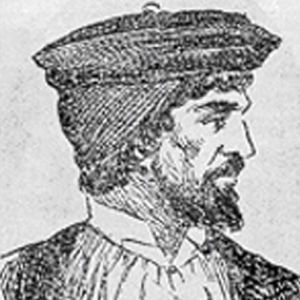Jorus Carolus
1566-1636
Place of Birth: Netherland
Biography:
Joris Carolus (ca. 1566, Enkhuizen - ca. 1636, Amsterdam? [) was a Dutch cartographer and explorer. He served for both the Noordsche Compagnie and the Vereenigde Oost-Indische Compagnie (Dutch East India Company).
Legacy:
Carolus apparently was a native of Enkhuizen. After he lost a leg at the Siege of Ostend (1601–04) he turned to the art of navigation and became a pilot (Stierman). In 1614 he was pilot of the Enkhuizen ship den Orangienboom (“Orange Tree”), under Jacob de Gouwenaer, one of the two ships sent by the whaling company Noordsche Compagnie on a voyage of discovery. Carolus claimed to have reached 83° N, but this would have been impossible given the ice conditions described by Robert Fotherby, who was also on a voyage of discovery in the ship Thomasine, sent by the rival Muscovy Company of England. According to Fotherby—who saw the Dutch ships riding off Amsterdam Island on July 6/16, "ready for the first opportunity to discover", and on August 9/19 "two ships of the Hollanders, that were appointed for northern discovery, were seene thwart of Faire Haven, sayling to the southwards"— the ice was packed along the northern coast of Spitsbergen. Even in shallops the English were only able to go as far north as Castlins Point (modern Gråhuken, at 79° 48’N).
On the same voyage Carolus came upon the island of Jan Mayen, which may have been discovered earlier the same year by the Dutchman Fopp Gerritsz., sailing in a whaleship sent by the Englishman John Clarke, of Dunkirk.Carolus named it after himself: Mr. Joris eylandt. He also named a bay Gowenaers bay (which name was moved toGouwenaerbåen) after the master of his ship, and a cape Jan Meys hoeck. This latter name, in honor of Jan Jacobsz. May, master of the other ship sent on discovery, de goude Cath (“The Golden Cat”) of Amsterdam, was later (1620) applied to the island as a whole, giving it the name it retains to this day.
Following his 1614 expedition to Spitsbergen Carolus charted a map of the islands. The map labels various features, including Generaels hoeck (South Cape), Bell sound(Bellsund), Greene harbergh (Grønfjorden), Mari mag. bay (Magdalenefjorden), Hollandsche bay or Feer-haven (Fairhaven), and de Reus ("The Giant", Cloven Cliff), among other things.
The map also shows what may be Edge Island’s south coast. Carolus showed the coastline split into two parts: Onbekende Cust (“Unknown Coast”) in the west, and Morfyn (a corruption of Matsyn, part of Novaya Zemlya) in the east. Islands are shown offshore of Morfyn. Martin Conway argued in 1901 that Carolus’ chart indicated that he had discovered Edge Island; but, as Wielder points out, Conway was ignorant of a map (engraved in 1612) by the Dutch cartographer Petrus Plancius, which illustrated a coastline to the east of Spitsbergen. The coastline, indented, with islands offshore, was labelled Gerrits Eylant. Wielder believed this to the first record of Edge Island’s south coast, when in fact this coastline as well was only copied from an earlier chart which merely showed a vague mass that was supposed to represent Spitsbergen.
Edward Heawood, writing in response to Conway’s claim of Carolus being the first discoverer of Edge Island, wrote a "Correspondence" refuting his claim. Carolus, who never made any claim of having discovered the said island (which is counter to his usual boastfull claims of discovery), shows Morfyn (or Marfyn, which Conway said represented Edge Island) some 18° too far east (relative to the mainland), while Onbekende Cust, which is supposed to represent Kvalpynten (which Heawood questioned as to why Carolus should refer to a land he allegedly discovered as “unknown”?), extends the longitude of the island to 30°, instead of its actual 4° of longitude. Heawood asserts that Carolus may have only copied both coastlines from earlier maps—in particular, Onbekende Cust may correspond to the land (without name) placed between Spitsbergen and Matsyn on a Dutch map of 1611.






















